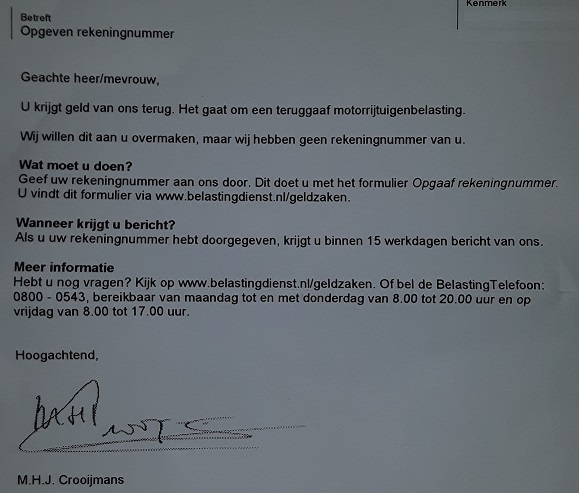
Thirty-four cents or less.
That’s how highly UPS values the satisfaction of their customers.
And I can prove it.
Last Monday, I was expecting a package shipped through UPS. Since I knew it contained my replacement Surface tablet, I was very eager to receive it. But as the notice of shipment specified only that it would be delivered before the end of the day, and I really wanted to run an errand, I decided to find out if they could be a little more specific about the delivery time. It would be a nuisance to stay home all day only to receive the package as late as 4pm.
So I gathered up my courage, kept my tracking number handy, and dialed the customer service number on their website.
With encouragingly little delay, the phone was anwered. Of course, it was a recorded message.
This is a transcript1 of the ensuing conversations.
Attempt 1
“This call will be charged to you at 35 cents, in addition to your regular phone rate,” a phone company recording told me. Then the computerized voice recognition software kicked in.
“Welcome to UPS,” it spoke, in a confident baritone. “This call may be recorded for training purposes. For information on our products and services, you can also visit UPS.com. If you are calling about a shipment, please have your tracking number or infonotice handy. To optimize our service to you, please speak your choice from the following options.”
Silence fell, pregnant with expectation.
“Say ‘Package Tracking’ if you wish to track your package. Say–”
“Package tracking,” I interrupted.2
“You’ve chosen ‘package tracking’. If that is not correct, say ‘go back’.”
A somewhat threatening pause ensued. I held my breath.
“You can track your packages on UPS.com,” the voice informed me. “Also, you can visit UPS.com.”3 I held my tongue, attempting to radiate benign gratitude for this advice. “Are you the sender or the recipient of the package? Say ‘sender’ if you are the sender, and ‘recipient’ if you are the recipient.”
“Recipient,” I supplied.
“Please speak the tracking number of the shipment you are interested in.”
I opened my mouth to speak, but the computer was not finished yet.
“This usually starts with One-Zed.”
I checked: my tracking number indeed started with ‘1Z’. Again, I took a breath, but again, the voice cut me off.
“If you have received an infonotice, speak the string of numbers below the barcode.”
This was surely the moment for me to speak. But no.
“If your tracking number consists of digits only, you can also supply it by dialing the digits.”
I scanned the number. It consisted of eighteen characters, a significant proportion of which were letters. The computer voice had now been silent for seconds, so I calmly read every single one of those eighteen digits and letters.
“I’m sorry, I didn’t understand that. Please speak tracking number again.”
“One-Zed–”
“This usually starts with One-Zed.”
I felt it prudent to pause.
“If you have received an infonotice, speak the string of numbers below the barcode.”
And indeed, the voice insisted on going through the whole thing again.
“If your tracking number consists of digits only, you can also supply it by dialing the digits.”
I allowed a pause of half a second, and reeled off the eighteen characters again.
“I’m sorry, I didn’t understand that. Please speak tracking number again.” Pause. “This usually starts with One-Zed.” Pause. “If you have received an infonotice, speak the string of numbers below the barcode.” Pause. “If your tracking number consists of digits only, you can also supply it by dialing the digits.”
I jumped right in, but before I had a chance to say more than five characters, the computer cut me off with:
“I will now transfer you to a customer service representative.”
For a fraction of a second, I felt some relief at that. I would get to speak to a human being! But then three tones sounded, as if the computer was actually working a physical phone and dialing an extension4. And before I could even begin to anticipate the answering of this call, an entirely different voice sounded, one canned not by UPS, but by the phone company:
“You’ve dialed a non-existent number. Please refer to your phone directory for the correct number. This call will now be terminated.”
And so it was.
Attempt 2
Not one to be deterred by a single failure, I hit Redial and tried again. Again, the system informed me that I would be spending at least 35 cents on this call, that it might be recorded for training purposes5, that I could find information on UPS.com, and that there were options forthcoming.
“Track package,” I said as soon as i could. Unfortunately, that wasn’t literally what the infernal system expected.
“Do you mean ‘package tracking’?”
“Yes,” I said, with more than a little exasperation in my voice.
“You’ve chosen ‘package tracking’. If that is not correct, say ‘go back’.”
I kept silent during its pause, and ran off a string of colurful insults in my head.
After going through the next two circles of Hell questions from the voice recognition system, and being told once more that I could visit UPS.com or alternatively visit UPS.com, I was again invited, in the same extended, pause-riddled speech, to speak my tracking number.
I spoke clearly and calmly, assuming a non-threatening posture, as one does when locked in an elevator with an axe-toting maniac. Again, the computer didn’t understand. On my second attempt, I spoke slightly slower, though with the same extreme level of diction and clarity. No dice. On the third attempt, which I got to finish this time, I spoke a bit faster.
But the end result was the same. Transferred to a non-existent number, followed by a busy tone.
Attempt 3
On my next attempt, I decided, I would switch strategies. All the preliminaries were inevitable, but there must be a way to circumvent the tracking number speaking phase. I called again, and when the computer presented its choices, I waited until the end, and said:
“More options.”
“Does your call concern a shipment?” the system immediately asked. And before I had a chance to stop myself, I answered, truthfully:
“Yes.”
As I banged my head on my desk, the computer began its extended torment once more:
“Please speak the tracking number of the shipment you are interested in…”
Needless to say, the end result was the same.
Attempt 4
By now it was obvious: if I was to get through at all, I would have to lie through my teeth. I went through the introductory skirmishes without injury, and reached the spot where I had erred before by speaking the truth.
“Does your call concern a shipment?”
“No,” I said, with as much authority and confidence in my voice as I could muster.
“Are you sure? Most people call about a shipment. Are you calling about a shipment?”
“No,” I repeated, still more firmly.
“Really? Cross-your-heart-and-hope-to-die-really? You’re not just saying that? You’re not pulling my leg? Are you calling about a shipment?”
“No!” I all but shouted.
A long string of questions followed, all of which I answered in the way least likely to result in being asked for a tracking number. When I finally got the result I was aiming for, I felt triumphant, as if I had beaten a polygraph in the bowels of NSA HQ.
My sense of victory lasted all of two seconds.
“I will now transfer you to a customer service representative,” the computer told me, and I swear its synthesized voice sounded smug.
Three dial tones sounded.
Seconds later, I was listening to a busy tone.
Aftermath
I had now read my tracking number out loud nine times, spent about 10 minutes and €1.40 on these useless attempts at communication, and been told I could find more information on UPS.com a total of twenty-two times. Meanwhile, I was no closer to finding out when I might expect my package to be delivered. So in a combination of annoyance and sheer despair, I used their contact form6 to submit a request to call me back7.
A day later, UPS customer service representative Kevin did.
“I understand from your message that you are trying to track a package?”
“Not any longer,” I said. “It was delivered yesterday at 4pm. That answered my question about the expected delivery time. Apparently, the expected delivery time was 4pm. If you had called back yesterday, this call would actually have been of some use.”
“Well sir, we answer e-mails within 24 hours. If you needed immediate assitance, you should have called.”3
“Funny that you should say that. Are you aware that your computerized voice recognition system doesn’t actually work?”
“Oh yes, sir, we are well aware of that. In fact, it is so useless that we are working on replacing it.”3
In my head, I counted to ten.
“But you are keeping it online anyway, and collecting the €0,35 fees from calling customers, even though you know people can’t get through?”
“It isn’t like that, sir.”
“It isn’t?”
“No, there’s also your regular phone charge.”
I counted on to twenty in my head, and when that didn’t help, brought myself to inner peace by imagining the UPS Customer Service Manager strung up by his testicles8 with his head submerged in a pit full of fire ants.
“But that’s fraud, isn’t it? Or theft? Shouldn’t you refund those callers?”
“Oh no, sir. We much prefer to keep the money.”
Quod Erat Demonstrandum
1 Okay, I may have taken some liberties in my transcription, but the gist of it is true to the original. Except where I couldn’t help myself. As a homework exercize, I challenge you to identify the locations where I’ve exaggerated the computer’s (and Kevin’s) less than helpful responses.
2 Maybe I should have been polite, and waited until it had listed the entire set of options before choosing. Seeing how things turned out, it might have even made a difference.
3 I am not making this up.
4 This more than anything suggested to me that instead of a computer, I was actually listening to a person masquerading as one, and made my earlier interruption all the more relevant.2
5 God, I hoped it would be.
6 Which, admittedly, was on UPS.com.
7 The request may not have been couched in the most diplomatic terms.
8 Or her labia, of course, but for some reason, I suspect this department is run by a male.
